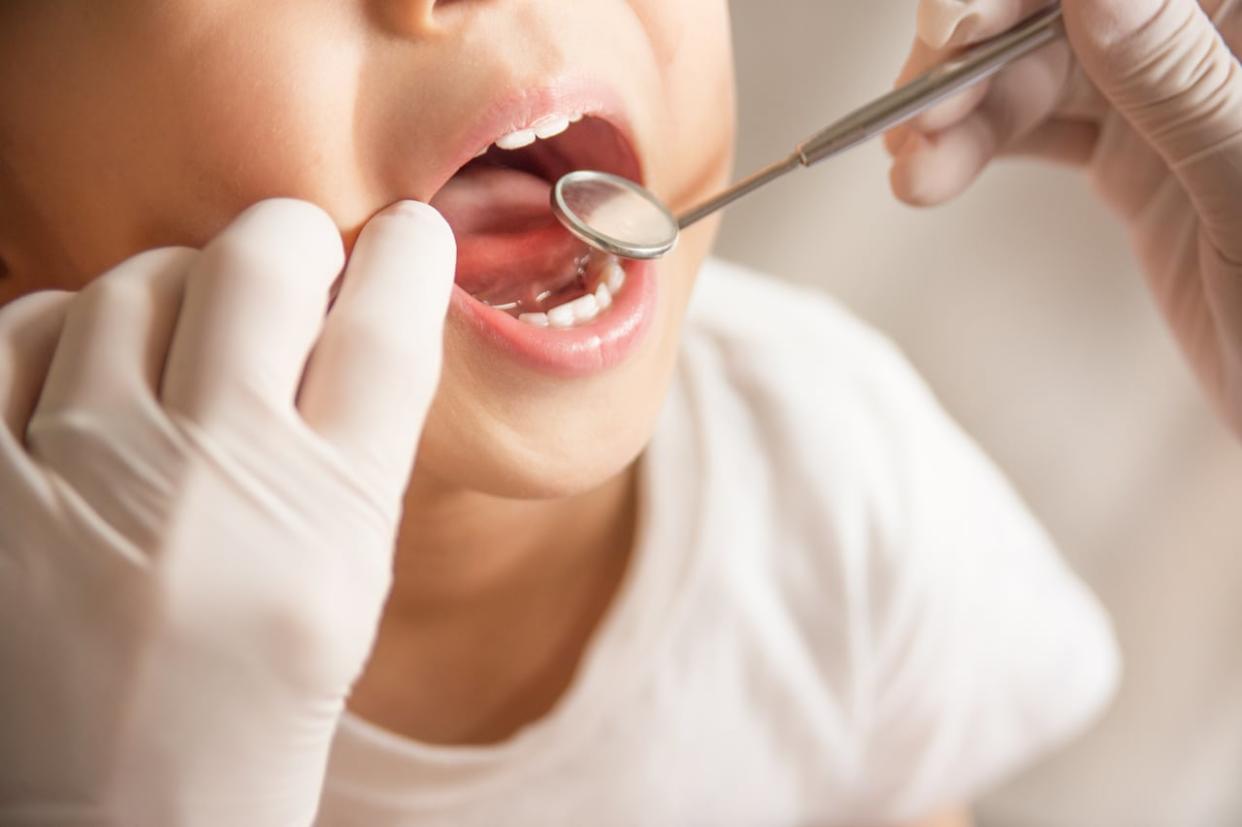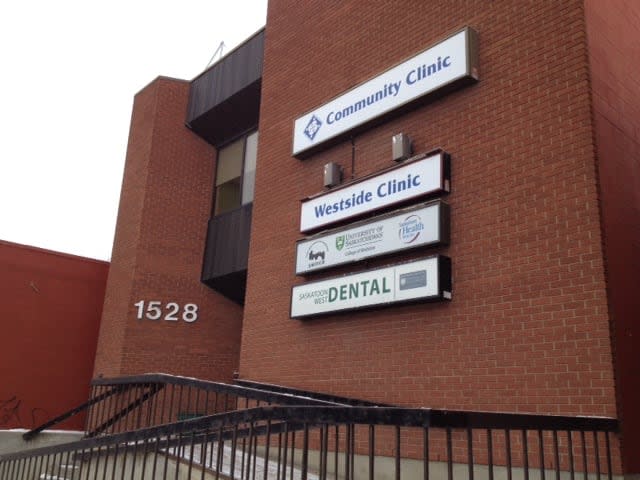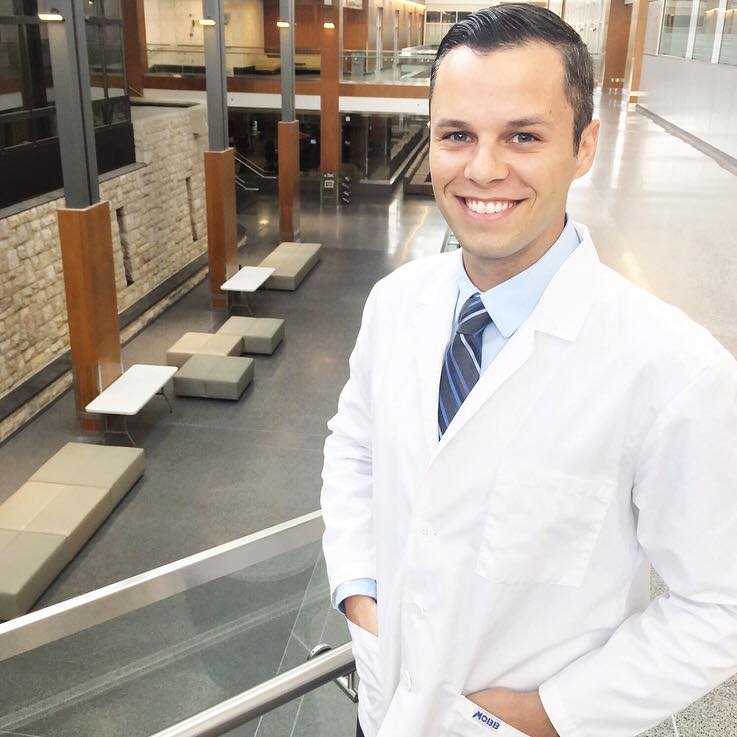Concerns around dental care access after U Sask moves clinic out of Saskatoon's core

The University of Saskatchewan has cited safety concerns in its decision to move its dental clinic from the city's core to its main clinic on campus — a move the executive director of the Saskatoon Community Clinic says raises concerns about access.
"Children that live in the core neighborhood of Saskatoon … where the dental clinic was located, actually have a much higher rate of cavities than children living elsewhere in Saskatoon or in the province," said Lisa Clatney.
"There were significant challenges in providing equitable dental care to that population and now it's going to be even more difficult for them to receive the care."
University of Saskatchewan dental students had worked under the supervision of dentists at its Saskatoon West Clinic, in the Westside Saskatoon Community Clinic on 20th Street for 12 years prior to the move in late October.
The move out of the inner-city Pleasant Hill neighbourhood also affected operations of DIRECT Dental, a student-run, volunteer-based initiative that provided free emergency treatment out of the clinic on Saturdays during the school year for those who couldn't afford it.
Members of that initiative said in a social media post after the relocation announcement that they were "exploring all possible alternatives" to ensure the service could run in the future.

The clinic was located in the Westside Saskatoon Community Clinic on 20th Street, before it was moved to the university's campus. (Steve Paqualotto/CBC)
But Clatney fears that some former patients will no longer seek dental care because there is no longer an option in the neighbourhood.
There are concerns about how former patients will get to the University of Saskatchewan campus, whether they will feel comfortable going there for dental care, and how appointments will be booked, she said.
"It worked for them to be able to come to the Westside Community Clinic — they were familiar [with it]," Clatney said.
"That's where they were coming to receive all their primary health-care needs and at the same time, they could also have their dental needs met."
Failing Indigenous patients: former board member
Jaris Swidrovich, a former board member of the Saskatoon Community Clinic who owns property in Saskatoon's core neighbourhood, said the majority of Westside Community Clinic patients are Indigenous.
The clinic incorporated ceremonies such as smudging into its practices to help patients feel more comfortable accessing care there, he said.
But in moving the Saskatoon West Clinic, the university's college of dentistry is failing in its own stated strategic priorities, which include becoming "Canada's leader in inclusive community care" and "uplifting the needs, preferences and aspirations of Indigenous people," said Swidrovich.
"It makes folks like myself, who are well integrated in the Indigenous community, question the [college's] commitment to Indigenous peoples," said Swidrovich, who is a member of the Yellow Quill First Nation.

Jaris Swidrovich, who is a member of Yellow Quill First Nation, is a former board member of the Saskatoon Community Clinic. (Submitted)
The clinic provided an affordable option close to members of Saskatoon's core neighbourhood, he said.
"Many folks would receive services free of charge at this clinic, which was essential given their lives living below the poverty line," Swidrovich said.
University defends move
The university said in an emailed statement the relocation addressed safety concerns identified by University of Saskatchewan Protective Services.
The statement did not say specifically what those safety concerns were.
"All Saskatoon West Clinic patients were informed of this decision and have been assured that this change will not disrupt any of their dental services," the university's statement said.
The clinic will continue to offer emergency and non-emergency dental treatments on a low-cost or no-cost basis for those in need, the university said.
So far this month, "the main clinic has had visits from 42 patients who were patients of the Saskatoon West Clinic, and we continue to work with patients who require support in accessing services on campus," according to the U of Sask. statement.
The university also said relocating the clinic provides a modest cost savings, allowing the college of dentistry to provide more resources for students and treat more patients.
LISTEN | U of Sask shuts down dental clinic that offers free care in core neighbourhood:
But Clatney said the relocation came as a shock to the Saskatoon Community Clinic, which was given six months notice.
"We didn't receive any notice that there were [safety] concerns. There was no opportunity for us to collaborate and jointly problem-solve if there were safety concerns with their faculty and staff accessing the clinic," Clatney said.
"It's just unfortunate the process by which it unfolded."
Clatney said the clinic has safety measures in place, including security guards on staff at all hours when the clinic is open and video surveillance. It also provides cellphones to all staff.
The Westside clinic had also recently completed a safety audit prior to the relocation, which "was overall favourable," she said. It included a few recommendations, she said, which led to measures such as improved lighting and installation of privacy film on doors and windows.
"I think most of the concerns [from the university] were not necessarily what was happening within the clinic walls, but outside in the neighbourhood," Clatney said.
"I am worried about the message that this sends from the university."

 Yahoo News
Yahoo News 
